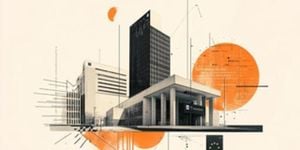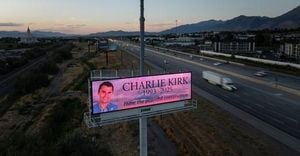LOS ANGELES — Devastation swept through the Los Angeles area this week as two significant wildfires, the Eaton and Palisades fires, wreaked havoc, resulting in the loss of over 10,000 structures, including homes, businesses, and treasured landmarks. The fires, fueled by dry Santa Ana winds and the region's historic drought conditions, have forced nearly 180,000 residents to evacuate, leading to chaotic scenes across the city.
According to reports, California's wildfire season has started much earlier this year, showing patterns of increasing intensity and frequency correlated with climate change. Los Angeles Mayor Karen Bass voiced urgent calls for residents to heed evacuation orders, anticipating rapid fire spread due to heightened winds expected later on Thursday. "We are expecting this fire to rapidly spread due to high winds," she confirmed during her briefing.
The impact of the fires has not been evenly distributed across communities. A detailed report from UCLA revealed stark disparities within the Altadena area, where nearly half of the Black-owned or rented households were either destroyed or severely damaged by the Eaton Fire. This contrasts with around 37% of non-Black households facing similar fates, highlighting how historical redlining has perpetuated vulnerabilities within marginalized communities. Lorrie Frasure, the director of UCLA's Ralph J. Bunche Center for African American Studies, stated, "We want to make sure through data, we can speak to recovery efforts; the process should acknowledge the historical legacy."
With rising housing costs pushing down the population of Black families from 43% to only 18% since 1980, the legacy of discrimination continues to echo through the ashes of these fires. The report indicated 61% of Black households were located within the Eaton Fire perimeter. Frasure remarked on how GIS mapping technology starkly illustrated these disparities.
Compounding the challenges of rebuilding is the demographic of homeowners most affected. Many of them are elderly, with Frasure noting, "If you're an aging population, you worry about some of the barriers to being able to rebuild and restore your community back to the way it was before." The financial strain on these families is palpable, with 45% of Black homeowners reportedly spending more than 30% of their income on housing costs.
Meanwhile, communities are grappling with what some researchers term "climate gentrification," where natural disasters accelerate existing trends of displacement. Reports of developers reaching out to affected homeowners seeking to buy damaged properties have raised alarms about the community's future. Historical patterns show similar occurrences following disasters, such as Hurricane Katrina, where homes were often gentrified post-catastrophe, leaving former residents to face mounting challenges. One local lawyer, James Bryant, stated, "I didn't want what happened there to happen in L.A.,” aiming to raise awareness about the need for support systems.
The emergency response from the government has been commendable, yet many families have reported encountering hurdles with FEMA assistance, receiving only limited funds from disaster aid programs. Bryant shared, "FEMA was only like 700 something dollars, and people were either getting denied or facing complications due to fraud.” This desperation has led to numerous GoFundMe initiatives aimed at supporting families displaced by the fires, with Bryant contributing to efforts alongside other community members to provide direct aid.
The fires have also claimed human lives, with reports confirming at least seven fatalities, including two victims identified near the Palisades Fire. Recurring tragedies unfolded as families struggled to evacuate, with stories of individuals determined to stay and protect their properties resulting in loss. One family member recounted the heartbreaking loss of her brother who chose to remain behind, only to be found later with the determination to defend his home.
Despite the wide-scale destruction, hope persists, with community organizations rallying to aid affected individuals. Programs like the Los Angeles Fire Department Foundation and American Red Cross have mobilized to provide shelter, supplies, and medical assistance. These efforts represent resilience amid despair as fire-ravaged communities begin the arduous recovery process.
Los Angeles is contending not only with flames but also with pressing issues of equity and recovery. Kathryn Barger, Los Angeles County Supervisor, reflected on the community's challenges by stating, "While we are still facing significant threats, I am hopeful the tide is turning." The need for targeted assistance and comprehensive recovery strategies is more urgent than ever. The scars left by the wildfires will take time to heal, but without proactive measures, communities risk becoming casualties of not just nature but systemic inequalities.”



